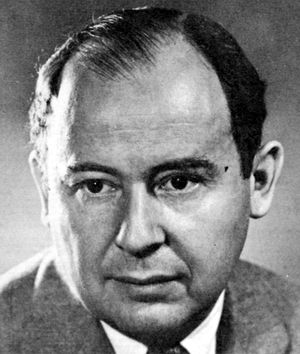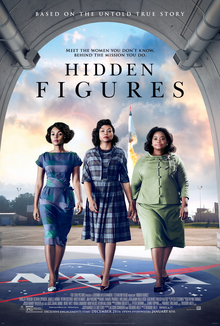- About MAA
- Membership
- MAA Publications
- Periodicals
- Blogs
- MAA Book Series
- MAA Press (an imprint of the AMS)
- MAA Notes
- MAA Reviews
- Mathematical Communication
- Information for Libraries
- Author Resources
- Advertise with MAA
- Meetings
- Competitions
- Programs
- Communities
- MAA Sections
- SIGMAA
- MAA Connect
- Students
- MAA Awards
- Awards Booklets
- Writing Awards
- Teaching Awards
- Service Awards
- Research Awards
- Lecture Awards
- Putnam Competition Individual and Team Winners
- D. E. Shaw Group AMC 8 Awards & Certificates
- Maryam Mirzakhani AMC 10 A Awards & Certificates
- Two Sigma AMC 10 B Awards & Certificates
- Jane Street AMC 12 A Awards & Certificates
- Akamai AMC 12 B Awards & Certificates
- High School Teachers
- News
You are here
Numbers, Infinity, and Reality: An Interdisciplinary Undergraduate Philosophy of Mathematics Course – Sample Topics and Readings
A full list of course texts we have used in one or both versions of the course Numbers, Infinity, and Reality is provided in the Appendix. Here we provide three case studies from our syllabus that have met with particular success and which illustrate especially exciting ways in which philosophy and mathematics can be integrated in the classroom.
Benacerraf
One of the key texts on our syllabus—one that became a touchstone for several subsequent readings, discussions, and assignments—is Paul Benacerraf's classic article “What Numbers Could Not Be” [Benacerraf 1965]. Benacerraf defends a type of anti-realism about numbers, arguing that numbers (at least as certain prominent set theorists have influentially conceived of them) cannot be real or objective, but are instead merely nominal or functional. His argument turns on pitting the set-theoretic formulations of number offered by Ernst Zermelo and John von Neumann against one another. As Benacerraf frames it, Zermelo defines a number as equivalent to the set containing all of its non-negative integer predecessors. Thus, for Zermelo, the number 1 should be understood as \(\{ \emptyset \}\), the number 2 is \(\{\emptyset, \{\emptyset\}\}\), the number 3 is \(\{\emptyset,\{\emptyset\},\{\emptyset, \{\emptyset\}\}\}\), etc. This means that, for instance, the number 17 has 17 members. Von Neumann, on the other hand, defines a number as equivalent to the singleton set containing the preceding integer. Thus, for Von Neumann, the number 1 should be understood as \(\{\emptyset\}\), the number 2 is \(\{\{\emptyset \}\}\), the number 3 is \(\{\{\{\emptyset \}\}\}\), etc. This means that the number 17 only has 1 member, viz., the number 16.


Figure 3. Ernst Zermelo (left) and John von Neumann (right). Convergence Portrait Gallery.
Benacerraf purports to demonstrate that these two ways of using set theory to formulate the essence of number yield divergent answers to questions such as, for example, whether 17 contains 3. For Zermelo, 17 would indeed contain 3, whereas for von Neumann it would not. Furthermore, Benacerraf argues that there is no non-arbitrary way to decide between these two competing formulations. If Benacerraf's argument is valid, then it would seem that we should either adopt an anti-realist or deflationary stance regarding numbers or abandon the set-theoretic conceit that cardinality exhausts the essence of number.
To provide the requisite background knowledge, students were assigned a brief problem set featuring basic set-theoretic definitions, notation, and examples. Additional in-class activities and lectures helped train students' intuitions about sets through the use of metaphors of containment. While these metaphors do pose difficulty when a more nuanced understanding of sets is required, they have served as an expedient way for students to gain sufficient understanding to engage with the fundamentals of sets and Benacceraf's argument.
Benacerraf's piece is an accessible and concise way to introduce the nomenclature and motivations for set theory to first-timers, and it also provides a powerful way to help mathematics and philosophy students alike appreciate how formal techniques can be leveraged to probe deep metaphysical questions.
Greenberg
Students are assigned to read excerpts from the textbook Euclidean and Non-Euclidean Geometries: Development and History by Marvin Jay Greenberg [Greenberg 2008], which weaves together an axiomatic development of Euclidean and non-Euclidean geometries alongside their respective histories. Prior to reading Greenberg, students have encountered Euclid's Elements, specifically the first 23 definitions and five postulates. The instructors place these texts into context with a brief oral history of the development of geometry from the time of Euclid up to the modern day. Our selection of these texts is intended to provide temporal contrast between two axiomatic developments of Euclidean geometry. Greenberg's Chapter 3 describes the “flaws” in Euclid from an axiomatic standpoint and goes on to develop a modern set of axioms to define a Hilbert plane. About half of the class discussion focuses on Greenberg's presentation of the axioms of “incidence” and “betweenness,” with the other half revolving around how Euclid's fifth postulate would enter into this fold. Students are enabled to discuss the merits of separating visual and/or physical representations of geometric objects from formal definitions. To underscore the virtues of precision and specificity in mathematics, and to demonstrate the slippery nature of Euclid's fifth postulate, we incorporate a hands-on activity as well as video content.
Styrofoam Globe Activity: For the hands-on activity, students are given Styrofoam spheres and rubber bands. First, students are asked what constitutes a straight line on the surface of a sphere. Students attempt to draw a line on the surface of the Styrofoam sphere and conclude that the result is a “great circle,” with one familiar example being a line of longitude on a globe. Students quickly surmise that a geometry of points and lines might harbor different properties if the lines are circular. The instructors then prompt students to reconsider the axioms of incidence and betweenness from Greenberg in the context of points and “lines” on a sphere. Quickly, students see that the incidence axioms hold but some of the betweenness axioms fail. The circular nature of the lines on a sphere can also prompt a discussion on infinity, as students can consider whether or not great circles should be considered to have infinite length. This relates directly to one of the betweenness axioms, as well.
Hyperbolic Geometry Video Content: A wonderful addition to in-class discussion is Margaret Wertheim's TEDEd talk that describes the discovery of models of hyperbolic geometry in the form of crocheted surfaces and coral reefs [Wertheim 2009]. Wertheim provides a brief overview of Euclidean, spherical, and hyperbolic geometries and specifically demonstrates the failure of the Euclidean parallel postulate on a crocheted hyperbolic surface. Wertheim's quip that “feminine handicraft” is responsible for the first constructed physical model of hyperbolic geometry primes students for later conversations addressing the historically undervalued contributions of women and racial minorities to mathematics.

Figure 4. Margaret Wertheim with crocheted coral reef display. www.margaretwertheim.com.
Alexander
Some of the most stimulating class discussions we have enjoyed have been inspired by an article by the historian Amir Alexander, “Tragic Mathematics: Romantic Narratives and the Refounding of Mathematics in the Early Nineteenth Century” [Alexander 2006]. Alexander's text introduces students to sensational(ized) episodes from the lives of the nineteenth-century mathematicians Évariste Galois, Niels Henrik Abel, and János Bolyai. Such hagiographies stem from and reinforce a picture of the successful mathematician as a heroic genius who suffers from being tragically misunderstood and is subject to Faustian agony in the face of esoteric intuitions.
Equipped with these historical anecdotes, students are encouraged to confront Alexander's thesis that “mathematical stories and mathematical practice are linked” by examining the tropes about math and mathematicians represented in popular consciousness today. Particular contemporary examples include the portraits of mathematical practice and psychology depicted in films such as Good Will Hunting (1997), Pi (1998), A Beautiful Mind (2001), Proof (2005), The Theory of Everything (2014), and Hidden Figures (2016), some of which we also assign for in- or out-of-class viewing. In addition to these films, we have also utilized in-class video material from Talithia Williams that exposes the diverse ways in which mathematics and data collection can be used, alternately, to empower, liberate, alienate, or control our bodies, the movements of social-political groups, and our senses of self [Williams 2014].
All of these discussions and examples help reveal the many ways in which gendered, racial, and economic dimensions of identity intersect the reality of mathematical practice, and students are empowered to reflect on their own autobiographical relationship with mathematics. Budding math majors are able to think constructively about how to see themselves fitting into the profession of mathematics; the putatively math-phobic are able to confront tropes that have contributed to their feeling alienated from mathematics; and philosophy students are able to see how their humanistic training can be brought to bear on something like mathematics.

Figure 5. Promotional poster for the movie Hidden Figures. Wikipedia.
Kevin DeLapp (Converse University) and Jessica Sorrells (Converse University) , "Numbers, Infinity, and Reality: An Interdisciplinary Undergraduate Philosophy of Mathematics Course – Sample Topics and Readings," Convergence (June 2023)




